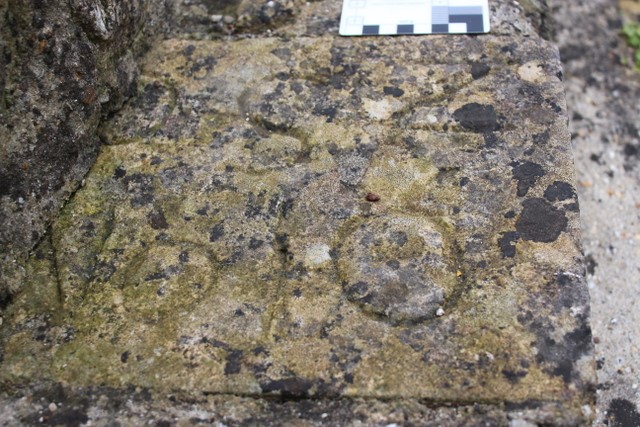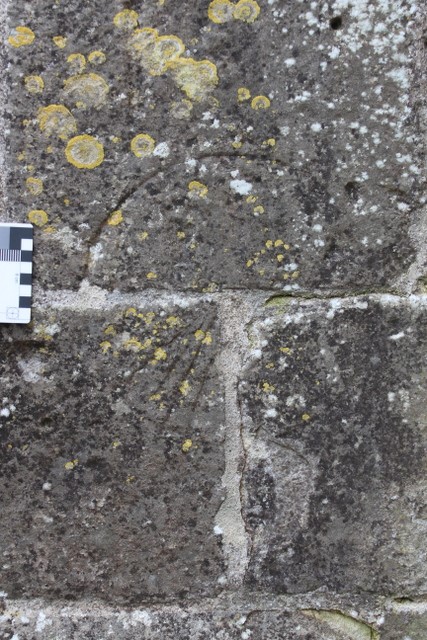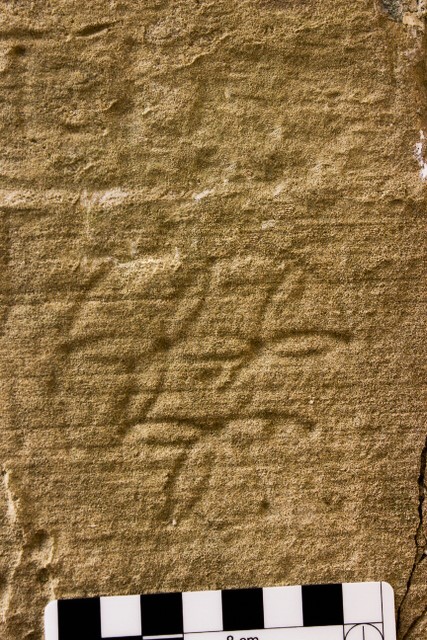Faded Meaning at St Leonard's, Sutton Veny
St Leonard's at Sutton Veny is an atmospheric, abandoned church which we first visited in -4° C. This partially ruined building seemed at its best within a landscape enveloped in a low lying mist. Evidence of previous restoration brings with it re-use of stone as evidenced by the image below.

Below is a mass dial built into the south wall. Often during restoration these are moved, this example remains in situ, however it no longer receives the sun’s rays due to an imposing buttress.

This eroded multi-hexafoil is situated in the south chancel door and is only visible in certain light such is its fragility. This hexafoil holds a special place for Wiltshire Medieval Graffiti Survey, as it is representative of the symbolism that has been lost to erosion and highlights the importance of our recording before all traces are lost forever.

______________________________________________________________________
This information was provided by the Wiltshire Medieval Graffiti Survey (WMGS). In late 2015, this group began recording graffiti in churches under the care of the Churches Conservation Trust in Wiltshire. Their work has involved fortnightly visits by a dedicated team, where local people are invited to take part and gain an alternative view of the fabric of their church.
The variety of historic graffiti has been immense from personal initials, often with a date, to enigmatic symbolism that has its roots in protection of a sacred space.
To record the inscriptions, a multi-LED torch was used at a sharp, oblique angle in order to emphasise shadowing of the incision, often referred to as a “raking light”. The result can “reverse” the incision into a positive relief rather than negative, making for easier interpretation.
Further detail can be captured using Photogrammetry and Reflectance Transformation Imaging (R.T.I).
Each image taken is referenced on a photo log sheet detailing the surveyors, a brief description and the all important photo frame number.
The group's work has been submitted to the Historic Environment Record. It has been submitted in a standardised form to ensure consistency in reporting. The advantages of this include access to, and correlation of material on a national level will enhance understanding across the country not just on a county level.

